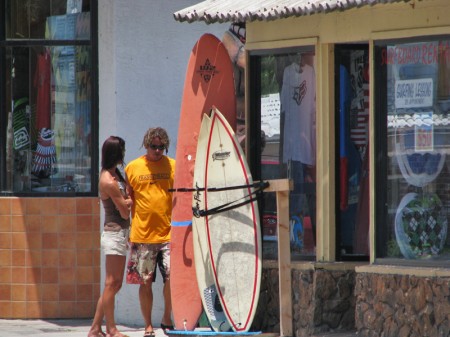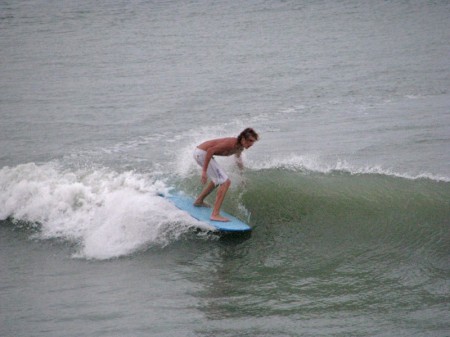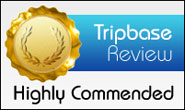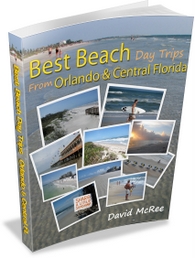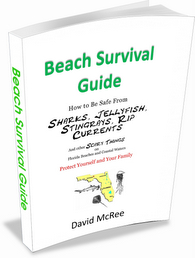
Everywhere you go on Florida’s Atlantic Coast you see surfboards of all kinds. The surf is nearly always up to some degree on the Atlantic Coast.
Supplying all the wave riding vehicles are innumerable surf shops and beach supply stores. But you don’t have to buy a surfboard–most any surf shop will rent a surfboard to you for the day or for the week for a very reasonable price. If you don’t know where to start, sign up for some surfing lessons. You’ll learn so much in one hour, and it will shave several months off the learning curve.
The younger set and the more experienced often will go for the small, sleek surfboards with colorful designs and a traction pad, like the one pictured above. These boards are high performers in quality surf, but they are really hard to learn on, and if you weigh more than 140 pounds they can be difficult to paddle in large surf.
Longboards, like the one pictured above, are much easier to learn on and better suited to the surf on most of Florida’s beaches. A longboard will be 9 to 11 feet in length. It looks big in the store and it can be awkward to carry, especially in a strong wind, but once you get it in the water it suddenly looks much smaller. Longboards are very popular at places like the Cocoa Beach Pier, which is where the above photo was taken. The waves looked too small to ride, but the longboarders were catching lots of waves.
Another option, pictured above, is a boogie board, also known as a body board. This is a much smaller wave riding vehicle made of foam. They usually have a slick rigid plastic bottom. They are designed to be used with swim fins, since they don’t have enough floatation to paddle like a surfboard.
Yet another option is the stand-up paddleboard. This is all the rage in Florida now. These boards are usually 10 to 12 feet long, 28 to 30 inches wide, and 4 inches thick. They are designed to stand on and paddle with an oar, or paddle, that looks like a long canoe paddle. While many people see this as a “new” sport, the ancient Hawaiians practiced it, so it is more accurately a revival of a lost art. You will often see stand-up-paddleboarding refered to by the acronym “SUP”.
Later I’ll post a video of some stand-up-paddle surfing (SUP). To get involved in SUP surfing you really need to get some instruction, either from someone with lots of experience and an ability to teach, or from a qualified instructor. SUP’s are very heavy and can easily injure you if you don’t use the right techniques for handling the board in the surf. They are also very expensive. A new SUP rig will set you back at least $1,500.
With so many avenues for getting into the surf and having some healthy fun, I’m sure you’ll find a surboard that will suit you.
I recently bought a new (used) board and have been working on getting my balance back. It’s a McTavish “Eightball”. It’s 8’6″, and after one trip to Cocoa Beach I’m wishing I’d bought an 11 footer. Here it is:
I bought it from Lenny’s Surf Shop on St. Pete Beach. Nice guy, Lenny. He spent a lot of time helping me decide which board to buy. A lot of time. And he was very generous with advice. I’m surprised that after 29 years of not surfing, I can still catch waves with no problem. It’s just standing up and balancing that causes me grief. Paddling out is no picnic either when you’re not 16 years old and 130 pounds. I’m thinking about getting a smaller “soft” board and kneeboarding for a while just to get my balance and endurance back.
